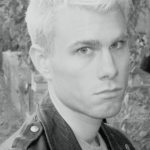




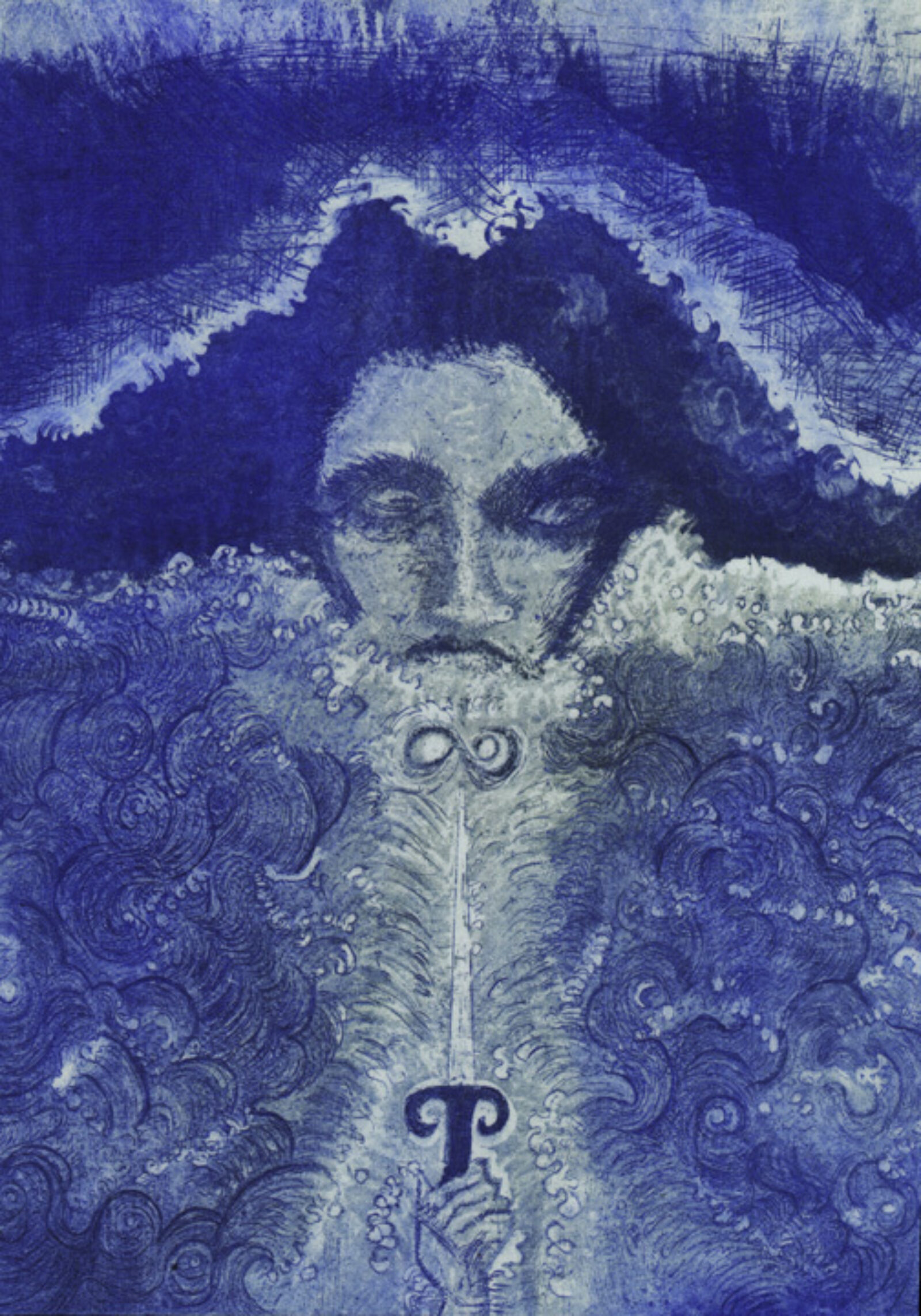

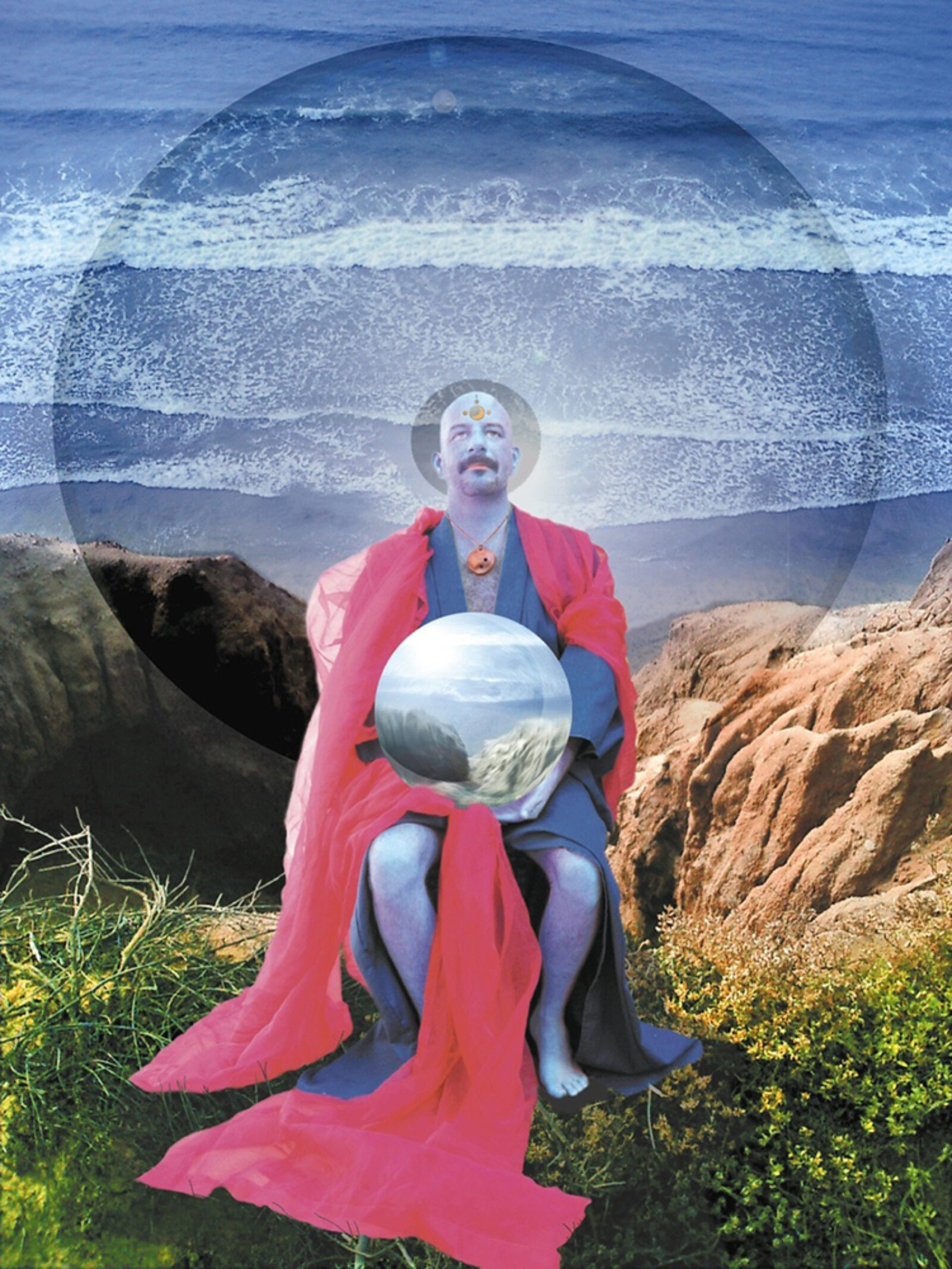


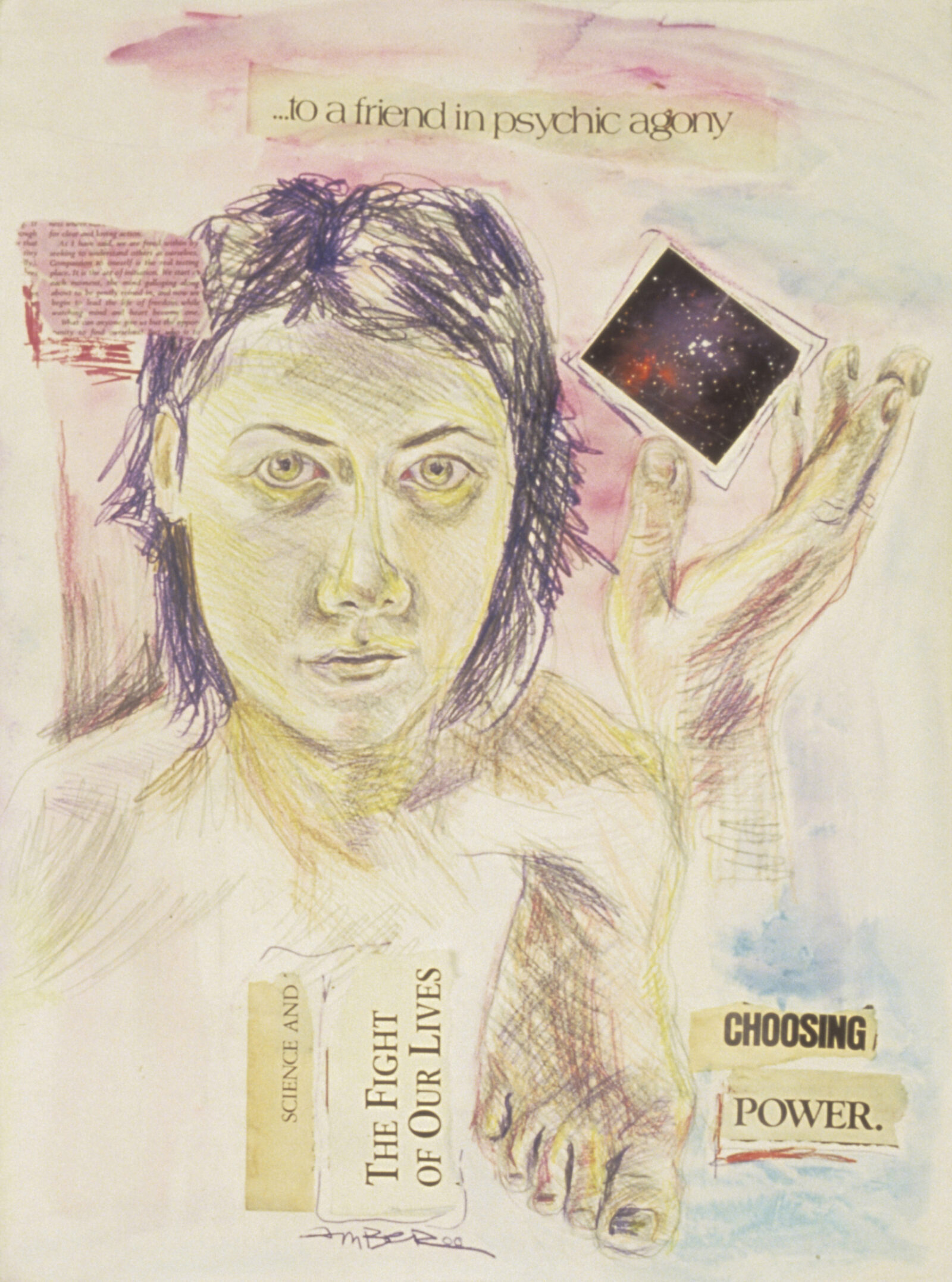
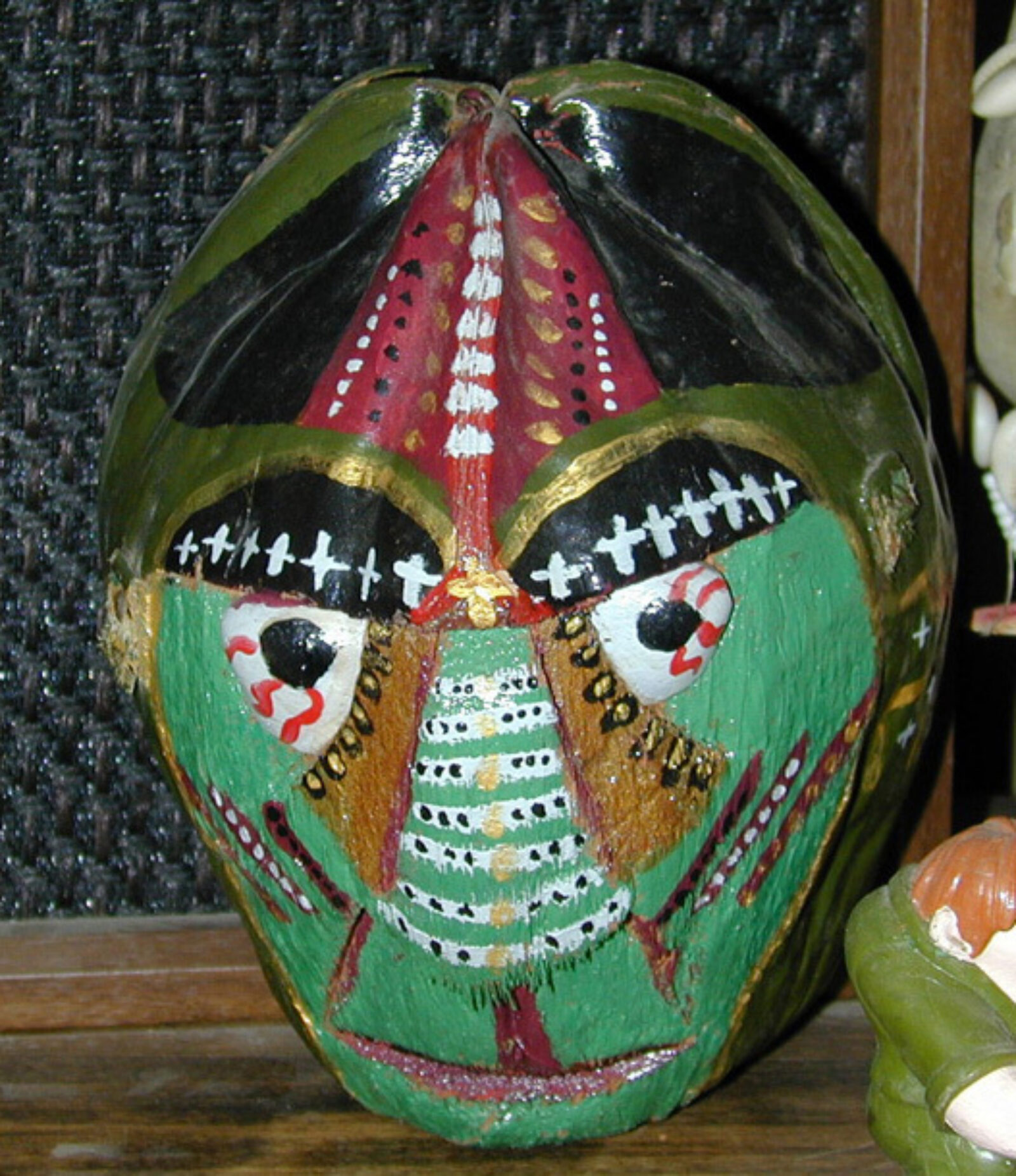
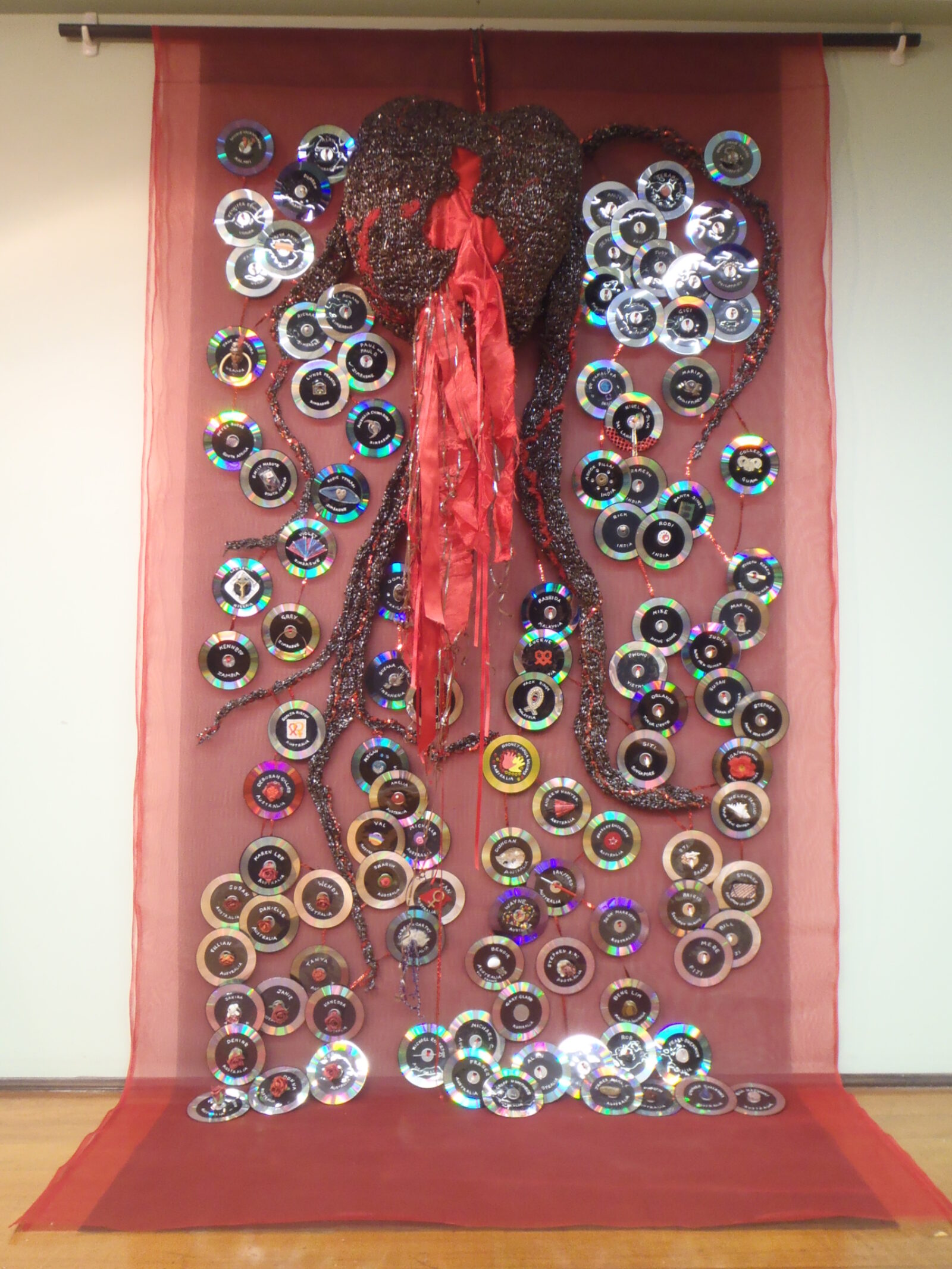
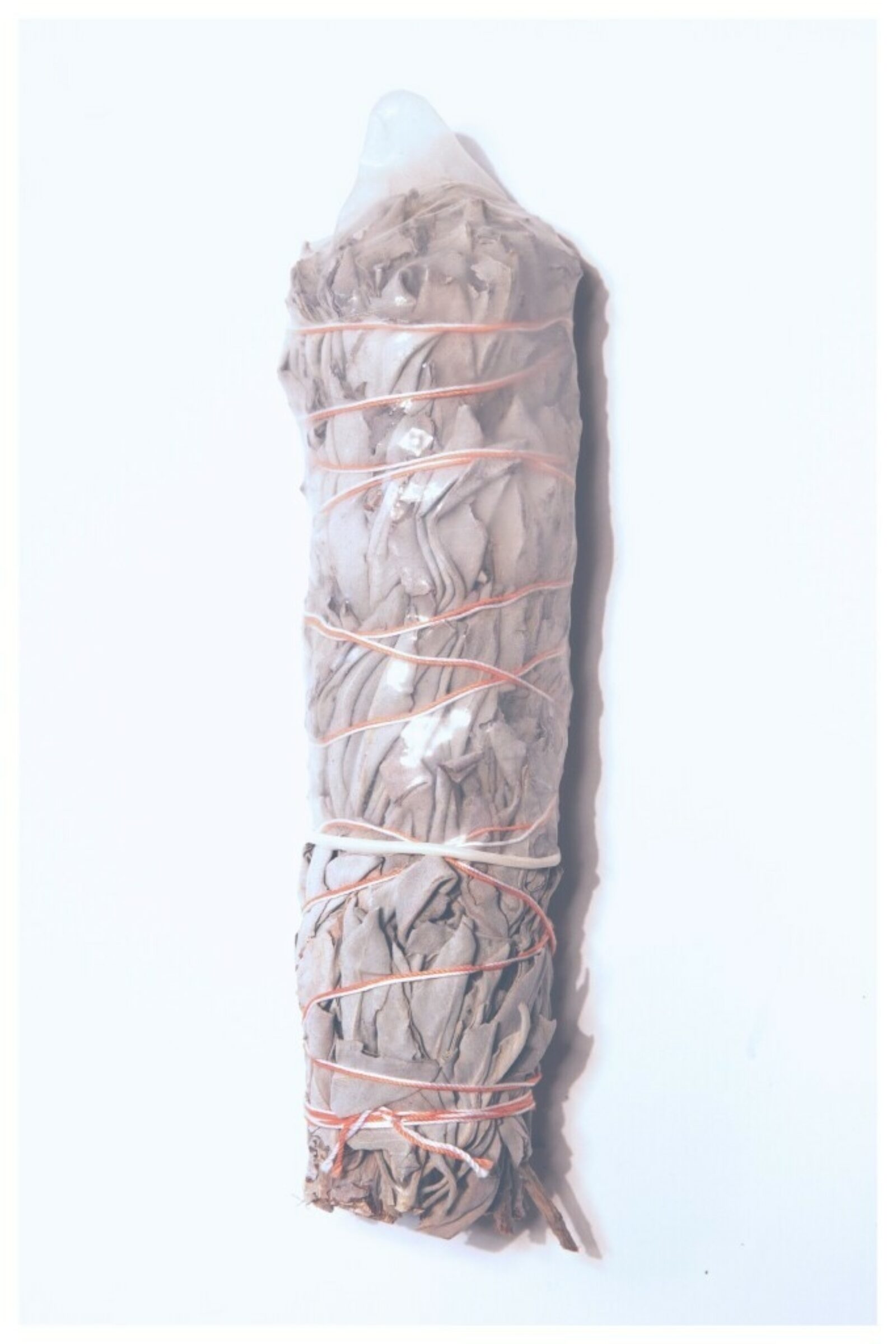

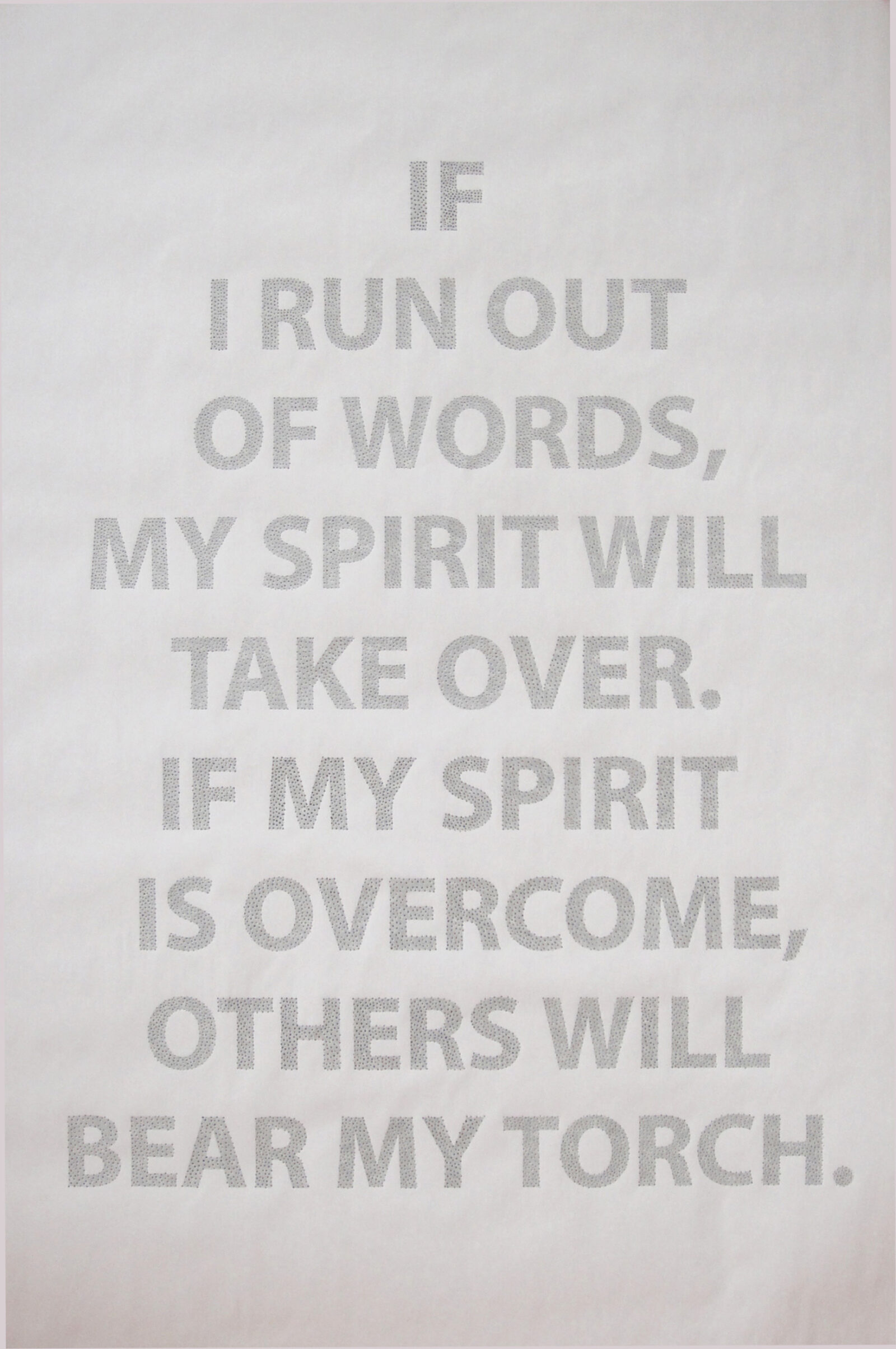
featured gallery for January 2018
Transcend and Transform
The art included in this exhibition is by HIV-positive artists who engage with the 'mystical.' I use this term broadly to refer to forms of spirituality and spiritual practice that are not particularly institutional, and are, for the most part, non-Judeo Christian. Merriam Webster defines "mystical" in concrete terms as “involving or having the nature of an individual's direct subjective communion with God or ultimate reality.” In other words, the artists included here are engaged with magic, the arcane, and the ‘supernatural.'
In the context of infection, the desire for personal connection with the divine seems particularly relevant or desirable; since HIV is scientifically incurable, one infected might naturally seek outside the ‘earthly.' The work of the artists included here grants us a way to look to spiritual-mystical practices, aside from institutionalized prayer, that give practitioners access to the divine and endow them with their own power to transcend or transform their lives and worlds.
Susan Paxton's The Heart of it is perhaps not so obviously 'mystic,' but nevertheless engages with themes of ontology née metaphysics as well as with the mystic practice of enshrinement. Moreover, the artist says she makes art because it "soothes [her], stretches [her], and puts [her] into a peaceful, endless space [she] experiences nowhere else except when [deep-sea] diving."
Eric K. Lerner, the artist who sparked the initial conversation that led to this curatorial project, began practicing Santeria with the intention to explore how it “enables healing through contact with spirit guides and deity.”[i] Lerner found guidance from the priest-shaman Baba Raul who once said, “Healing is the ability to balance one’s spiritual, intellectual, mental and physical natures.” Lerner has said that without Santeria he does not know how he would live his life today. Lerner’s spirituality is ever-present in his art work. Many of Lerner’s paintings are of Santeria orishas (spirit/ deities). His piece o Mio Yemaya pictures the orisha Yemaya who is sometimes called “the mother of the world." The piece Eleggua's Worlds focuses on Eleggua who is another orisha that guards life’s paths. However, Lerner’s work is not focused exclusively on portraying orishas. Amongst his other work are paintings The Hanged Man and Two of Wands (and disks), which draw their subjects from tarot cards.
Also inspired by tarot, Patric Stillman considers his creation of a tarot deck to be the start of his creative career. The deck Brotherhood Tarot is a gay tarot deck created in 2004. Drawing inspiration from gay history and mythology, Stillman created fanciful queer images to illustrate the divination cards. Stillman's images update and queer the traditional pictorial symbolism of the tarot. By reinterpretting these archetypal images through a queer aesthetic, Stillman makes them more relatable, which endows them with an increasing metaphysical power and makes them a tool for a collective queer self-reflection.
Ritual has been an important and reoccurring element within this realm of mystical art. Spiritual and magical rituals, be they prayer or spell casting, offer tools to affect, heal, and change one's self and one's surroundings. Andrew Zealley described his photographic series of charms Safe and Sound as being a method for him to “record and interpret material and ephemeral healing experiments, and the tools and instruments of neo-shamanic and subtle-energy healing practices.”[ii] In Zealley’s photograph High Risk Smudge, a smudge stick (bound white sage), which is used in Native American shamanism to banish evil, is sheathed by a condom. By combining these items Zealley has both created a charm and used the smudge stick to endow the condom with magical powers. Zealley also explores ritual in his installation Patient Files (portal), where ‘wands’ and glitter are encircled by turmeric.
Amber McCarthy, who described herself as a "queer Buddhist witch," was interested in “joining others with like minds to build heaven on Earth." The desire to “build heaven on earth” or to transform a thing-situation are commonly what drives people to practice magic. In fact, many have said that magic is “the art of causing change in accordance with the will.” McCarthy who was public about being sexually abused as a child said that she had “undergone a considerable amount of healing.” She seems to have used art and magic as dual tools for healing. In particular, her piece Power from the Inside appears to be a charm for healing herself and others. The piece features a self portrait of the artist holding a diamond-shaped image of the universe surrounded by pieces of text. These texts: “choosing power,” “a friend in psychic agony,” and “science and the fight of our lives” are simultaneously uplifting and sympathetic, and speak to the traumas of being both HIV-positive and sexually abused.
The late great filmmaker Derek Jarman was fascinated by mystic practices, particularly in alchemy and the figure of the sorcerer. The influence of John Dee, Queen Elizabeth I’s astrologer is felt most in Jarman’s films The Tempest and Angelic Conversation but also appears as a character in Jubilee. Jarman's film The Shadow of the Sun draws most heavily on his interest in alchemy. The film’s title comes from a renaissance era alchemical text that used the phrase as a synonym for the philosopher's stone. In the film flames fuse with images of magical ceremonies.
Robert Flack's piece Anatomical Garden uses the spirit and physical body as an interconnected subject. Flack's piece is the final and cumulative piece from his Empowerment Series, a series of eight photographs of the seven chakras. This series allowed Flack to perform a kind of mapping the spiritual body. The final piece offers an insightful overview of the body and its spiritual centers.
AA Bronson, a friend and collaborator of Flack 's as well as of Zealley's, offered an explanation of the chakras when discussing how they related to Flack's pieces:
"The first chakra, or root center, is positioned at the base of the spine, the sacral plexus. The second chakra is situated in the spine in the region of the genitals. The third chakra or 'gem center,' is at the level of the solar plexus. The fourth is located at the spinal region of the heart. The fifth chakra is located at the juncture of the spinal column and the medulla oblongata behind the throat, with the sixth situated between the eyebrows. The seventh chakra is located four finger-breadths above the crown of the head. This is seen as the center of quintessential consciousness where integration of all the polarities is experienced and the paradoxical act of transcendence is accomplished."[iii]
Working with spiritual and cultural imagery that defies Christian orthodoxy, Gordon Kurtti created vivid imagery that channels myth and ritual. Kurtti seemed to be particularly enchanted by the multi-armed Hindu god Shiva, who is manifested in photographic pieces like The Six Armed Shiva From the Lost 40 Days as well as in various drawings. Kurtti's piece Third Eye depicts a man invoked by a Hindu god, or amidst a spiritual experience that has 'revealed' his soul's third eye. Other pieces by Kurtti look at the 'mortal' side of spirituality by picturing what appear to be queer, counter cultural people performing or re-performing a series of pagan rituals.
David Wojnarowicz worked prophetically with AIDS, both as artist and social activist. Wojnarowicz’s photographs and photographic collages combined mystical images and symbols, such as skulls and totems. His photograph composite Spirituality for Paul Thek in retrospect seems reflective of the AIDS crisis and the idea of suffering from infection with an awareness of mortality. The piece combines images of men and a crucifix lying in dirt that has black ants crawling on the “tortured head of Christ.”[iv] Placed above the image of Christ is a series of three small vignettes of men aligned to form a triangle. The triangle has traditionally represented the Christian holy trinity of the three invocations of the father, the son and the Holy Ghost. In ancient and mystic traditions, the triangle signifies an eternal connection with the sacred or divine.
Shortly before his death in 1992, Wojnarowicz traveled to Chaco Canyon in the New Mexico desert, an ancient dwelling that contains many stone ruins from the time when the native Pueblo people (once called the Anasazi) occupied the canyon. In the canyon the artist conducted a performance piece. This piece, which seems to have only been documented by a single photograph, reads as if it conceptually ‘represents’ the experience being HIV-positive through the enacting of a shamanic ritual. Wojnarowicz enacted the performance by burying himself in the desert sand, leaving only his face exposed. In the piece, with his body being immobilized and covered in earth, Wojnarowicz performed a shamanic act by transporting himself into an altered, macabre state in which he was ‘dead.’ He symbolically transcended death by imposing it on himself while immersing his body within and into the power of nature. Robert Sember identified the metaphysical qualities of the work that are documented in the photograph of Wojnarowicz immersed in the desert sand, saying that “the stillness of the photograph” perpetuates the uncertainty of whether Wojnarowicz is about to raise out of or sink into the earth. In this uncertain state that Wojnarowicz occupies in the performance and photograph, he is ‘fixed’ in a metaphysical state of being µετά (“after, beyond or upon”).[v] Taken on the cusp of his death, he is pictured and fixed in “the moment of the crossing of a boundary between earth and air, dark and light, past and future.”[vi]
"If I run out of words, my spirit will take over. If my spirit is overcome, others will bear my torch." Thus states Shan Kelley's piece Disclosures V, a work that speaks of the power of the spirit to overcome obstacles. Similar to other art works in this exhibition, Disclosures V draws on the the power of spirituality, or more specifically, the idea of the artist’s spirit. In this way the piece offers inspirational and divine power; a praise turns a devastating situation into one of hope and community. Moreover, it acknowledges and draws on the transformative power of the spirit.
It may be that this art reflects the post-historical society in which “others” are looking beyond and back to revitalize, protect, and heal themselves. As “neopagan witches have learned… the technique of the art, the craft that they call magic, is not what has to be rediscovered” for use as a spiritual or social catalyst. “It is a matter of reclaiming, or reactivating” magic from the oppression of dominant culture to be used and valued as bodies or spaces are reclaimed.[vii]
For many people living with disease and disabilities, the body, mind, and spirit are deeply interconnected. Following and practicing mysticism may offer non-patriarchal, and thus more empowering, forms of spirituality. Casting spells and performing rituals can further the use of spirituality as a coping mechanism. As Eric K. Lerner notes, practicing Santeria “is the defining characteristic of my life and has enabled me to live with HIV-disease.” Andrew Zealley also said his interest in non-western healing was spurred by the HIV/ AIDS pandemic and his desire to “seek out the answers that the medical industry was not providing."[viii] Zealley has also identified why HIV-positive people, especially artists, are drawing on the mystic by quoting Joseph Cambpell: “[...] that the shamans of today are artists, people who deal in those discourses that do not fall into the rational, that can’t be justified. It’s poets and dancers and painters, they are the shamans of today, and they are in a way living on the periphery.” Mystics often feel that their practice outside the ‘norm’ as it is, defies patriarchial religious institutions. Instead they practice supernatural forms of ‘meditation’ on life, death, and the spirit world that simultaneously creates a powerful energy for manifestation and a ‘oneness’ with the divine.
[i] Lerner, Eric K. "Santeria: A Means of Healing and Personal Transformation." Shaman's Drum, 1997.
[ii] Zealley, Andrew. "Disco Hospital." Master's thesis, OCAD University, 2013.
[iii] http://www.thebody.com/visualaids/web_gallery/2002/bronson/statement.html#1
[iv] Meyer, J. D. "Profane and Sacred: Religious Imagery and Prophetic Expression in Postmodern Art."Journal of the American Academy of Religion, 1997.
[v] Sember, Robert. "Seeing Death: The Photography of David Wojnarowicz." In The Ends of Performance (Cultural Front) ed. Peggy Phelan, and Jill Lane, New York University Press, 1998, p. 31.
[vi] Ibid.
[vii] Philippe Pignarre and Isabelle Stengers. Capitalist Sorcery, Houndmills, Basingstoke: Palgrave McMillan, 2011, p. 138.
[viii] "Andrew Zealley in conversation with Henri Faberge." The Wardens Today. March 20, 2017. Accessed December 31, 2017. http://thewardenstoday.blogspot.com/2013/03/henri-faberge-in-conversation-with.html.
